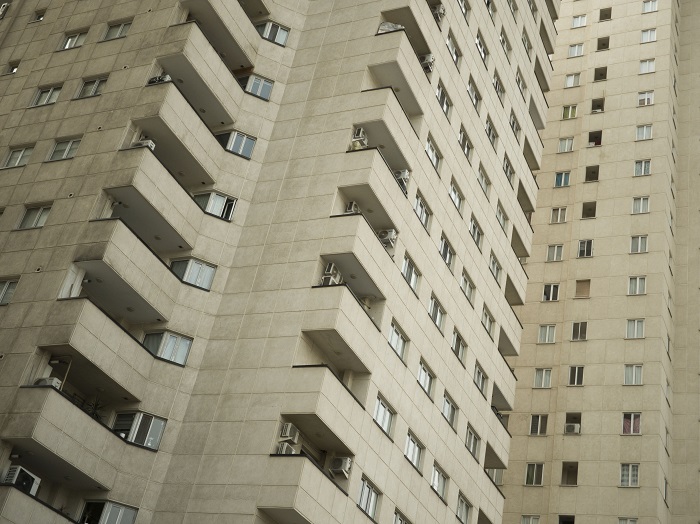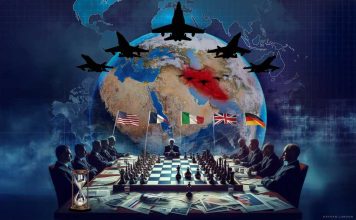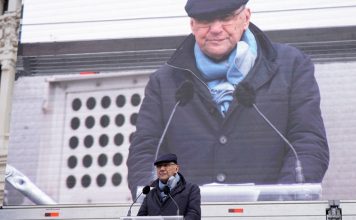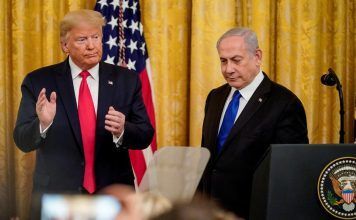By Kayhan Life Staff
Iranian real estate developers face severe financial challenges because of an ongoing stagnation in the housing market. So Islamic Republic officials have asked China to help redevelop several run-down neighborhoods in Tehran.
A recent visit by Tehran Mayor Alireza Zakani to China resulted in the signing of a memorandum of understanding between the two countries on housing development.
The agreement signifies a “commitment of cooperation” in addressing the capital’s urban development and housing problems, focusing on renovating, and revitalizing selected dilapidated neighborhoods in Tehran.
The agreement raises serious concerns about the extent of Chinese involvement in urban development projects in Tehran, the implications for domestic construction companies, and the impact on the city’s landscape and infrastructure.
Hamidreza Saremi, Deputy Director of Urban Planning and Architecture of Tehran Municipality, said Iran and China had agreed, in principle, to the “neighborhood revitalization project by private Chinese construction companies for over 1,000 [residential] units.” His remarks were reported by the Tehran-based newspaper Doniya-e Eghtesad on Jan. 31.
[aesop_image img=”https://kayhanlife.com/wp-content/uploads/2024/02/2022-06-15T000000Z_471346097_MT1NURPHO000KDQMKD_RTRMADP_3_IRAN-DAILY.jpg” panorama=”off” credit=”A construction site is pictured in northwestern Tehran as residential and commercial complexes are seen in the background. FILE PHOTO/REUTERS./” align=”center” lightbox=”on” captionsrc=”custom” captionposition=”left” revealfx=”off” overlay_revealfx=”off”]
Under the plan, private Chinese construction companies will redevelop run-down areas in Tehran’s districts 9 and 16. Mr. Saremi explained that the negotiations with private Chinese construction companies were ongoing, and no contract had been signed yet.
He said the proposed contract with the Chinese involves a large-scale construction project to renovate and build 1,000 to 2,000 residential units in specific areas of Tehran. The construction will revitalize run-down areas of Tehran via the “turnkey” method, whereby 140 square meters of newly built space per capita will replace 100 square meters of dilapidated housing.
According to Saremi, the “brownfield land” (reserved lots) in the dilapidated areas of the city will be granted to the Chinese companies on a “turnkey” basis for “neighborhood development” within the “usance” framework. Chinese companies will fund the project and transfer the technology to Tehran.
Brownfield refers to large reserved lots of more than one hectare. The term “turnkey” refers to ready-to-use completed projects. The term “usance” refers to commercial letters of credit used in construction projects or contracts where the delivery of goods or services is involved.
Saremi noted that the initiative marks a significant collaboration between the Tehran Municipality and the Chinese private sector to revitalize and redevelop specific areas within Tehran through large-scale construction projects
He explained that the city wanted to recruit beyond large-scale domestic real estate developers because construction companies involved in the project would build and redevelop a maximum of 4 to 10 housing units.
The Tehran Municipality is expected to participate in this initiative, but the deputy mayor noted that the plan was in its preliminary stages and required further finetuning.
The project is a significant effort to address the designated area’s housing needs. However, the involvement of Chinese companies in such a large-scale construction project reflects Beijing’s growing influence and investment in global infrastructure development.
“The Mayor of Tehran, Alireza Zakani, will travel to China soon,” Saremi said. “The purpose of this trip includes discussions with Chinese officials regarding an agreement on housing usance. The negotiations will involve Chinese private sector companies.”
“The focus of these agreements is for Chinese entities to enter Tehran’s housing market and use industrialized methods for constructing housing. As part of the agreement, the Chinese will be obligated to bring in technology and capital to construct these houses,” Saremi added.
ANALYSIS: After Currency Devaluation, Iran’s Economic Outlook Is Bleak
After his previous visit to China in the fall, Mr. Zakani announced that Iran and China had entered a significant trade agreement worth $3 billion. As part of this agreement, Iran would receive 1.4 billion euros in credit from China, to be used within three years.
Zakani emphasized that the visit to China would pave the way for favorable conditions for Tehran, with the potential for extending to other cities. He highlighted China’s keen interest in fostering economic and urban cooperation with Iran.
The semi-official Fars news agency said signing the memorandum of understanding between the Tehran Municipality and Chinese companies “would grant Chinese companies a greater presence in Tehran’s housing sector.”
Mehdi Hedayat, director of Tehran Renewal Organization, announced that the city council had signed a memorandum of understanding with a visiting Chinese group to build and renovate 200,000 housing units in Tehran. Tehran Municipality also plans to hold meetings with Chinese companies to discuss the transfer of technologies to Iran.
In November 2023, Mohammad Aeini, the chief executive officer (CEO) of the Urban Regeneration Corporation of Iran, announced that the government had approved a turnkey project aimed at renovating 10,000 dilapidated residential units within the year. Aeini noted that relevant agencies had been instructed to implement the plan.
“Under this turnkey plan, residents of the rundown buildings were given the option to exchange their units with newly built homes or with government land, with a 40 percent discount,” Aeini explained.
Aeini also highlighted the collaborative efforts of Iran’s Urban Renewal Company, the National Land and Housing Organization, and its parent company, the New Cities Specialized Construction Company, in working closely together on the turnkey plan to revive dilapidated urban structures.
Some experts are concerned about Chinese construction companies’ quality control and building standards. These concerns stem from previous problems encountered while working with Chinese companies on various construction projects in Iran.
Last November, Abdolmottaher Mohammadkhani, the spokesperson for Tehran Municipality, announced that Chinese companies were tasked with building Tehran Metro Line 11. This new line is to run from District 22 to 20, with stops in districts 16, 17, 18, 19, and 21.
“This development would lead to another evolution in the public’s access to Greater Tehran,” Mr. Mohammadkhani said.
According to Mohammadkhani, in 2017, separate contracts worth $4 billion were signed with China to supply 791 carriages for the Tehran Metro. He explained that although these contracts had remained “dormant,” they would be revived by the new urban management group.
“The credit line for purchasing 630 wagons for the Tehran Metro was reinstated through oil trade,” Mohammadkhani noted.
Mohammadkhani said a separate contract had been signed with a Chinese company for various public vehicles. The contract includes 1,000 12-meter electric buses, 1,000 18-meter gas-powered buses, 10,000 electric vans, 10,000 electric taxis, and 100,000 electric motorcycles. These vehicles are crucial to controlling air pollution in the city.
The “National Housing Movement” project, created by President Ebrahim Raisi’s government in Iran, aims to construct one million affordable housing units annually. Chinese companies have been involved in this project, which has not yielded tangible results after two and a half years.
The involvement of Chinese companies in the National Housing Movement project was confirmed in a Tehran-based online Tejarat News report.
According to the report, Iraj Rahbar, the head of the Commercial Builders Association of Tehran, stated that the Iranian government was selling oil to China below market value to finance housing projects.
Mr. Rahbar also argued that domestic real estate developers could have built homes for the government through “trade” instead of relying on Chinese involvement.
The estimated cost of constructing a housing unit under the “National Housing Movement” scheme by Chinese companies is approximately $1,118 per square meter.
This figure has been met with skepticism from homebuilders, who argue that it is unrealistic, considering the rising costs of building materials and the current inflation rate. They suspect that the Iranian government may sell oil to Chinese entities below the market price to ensure that the cost of residential units remains around $1,000 per square meter.














